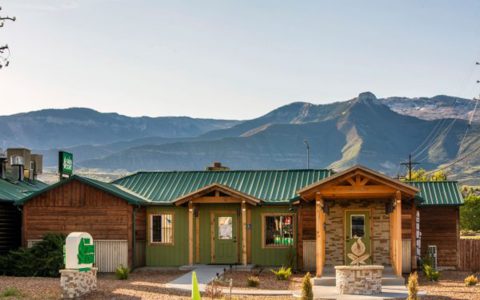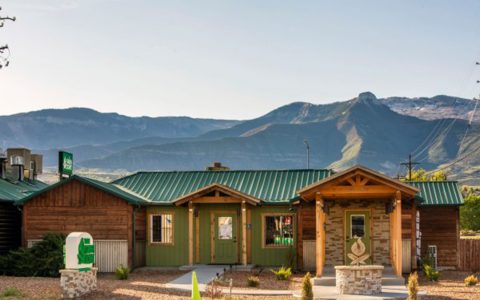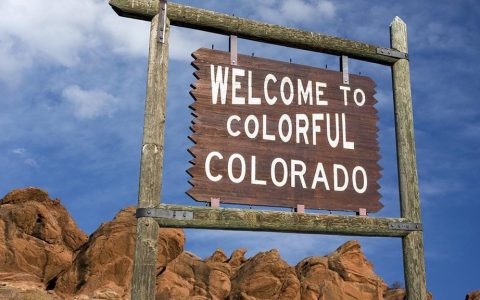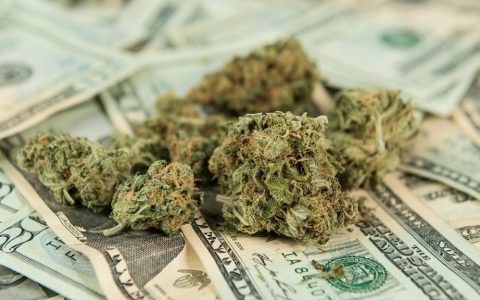New Year’s Day, 2019, marks the five-year anniversary of the first legal, recreational cannabis sales in Colorado. The first person to make that historic purchase, and the first of its kind in the nation, was a Marine Corps veteran and cannabis activist named Sean Azzariti.
Surrounded by local, national, and international media, Azzariti purchased about $60 worth of flower and infused chocolate truffles at a Denver dispensary early on New Year’s Day 2014.
“I still have the entire first purchase,” says Azzariti. “I tried to give it to a few local museums shortly after, and they promptly turned me down, citing federal prohibition. I’m hoping in the next few years that will change and I can give it to a museum to display.”
Five years later, cannabis is still thriving in Colorado. With higher-than-expected sales and tax revenue, the Centennial state is putting that money to good use and has paved the way for legalization in many other states.
Memories From the Dispensary Front Lines
Tim Cullen, CEO of Colorado Harvest Company, vividly remembers the line of customers around the block of Evergreen Apothecary in Denver on New Year’s Day, 2014. A couple months later, he and his business partner were even concerned about running out of product.
But Colorado’s recreational cannabis sector now faces the opposite problem, given the state’s booming market. “That wholesale market has brought about an abundance of cannabis to the Colorado market and that has lowered the prices. And that’s one of the biggest benefits for consumers, is a dropping of prices,” says Cullen.
Tim Cullen, CEO, Colorado Harvest Company
Cullen notes how five years of recreational pot sales have also helped to normalize marijuana in Colorado, both in terms of prices and as a commodity.
Before 2014, “on the black market, the gold standard was $100 for seven grams of you-don’t-even-know-what-you’re-getting,” he said.
“Today, seven grams of the highest-grade cannabis in Colorado [sells] for $50 and maybe even less than that. That’s a huge benefit, along with increased selection, for customers.”
“And that’s changed how people shop with us at the store,” he added. “With recreational marijuana we see people shopping like it’s a liquor store. People come in and just buy a couple of joints.”
Mile-High Money
Financially, Colorado has certainly benefitted from five years of recreational legalization.
Total marijuana sales in the state went from around $683.5 million in 2014 to $1.28 billion for the first ten months of 2018. Total cannabis sales from day one in January 2014 to October 2018 come in at $5.78 billion.
Tax revenue from medical and recreational cannabis in Colorado more than tripled over the past five years, from nearly $67.6 million in 2014 to almost $245 million for the first 11 months of 2018.
Total cannabis sales from day one in January 2014 to October 2018 came in at $5.78 billion.
Denver, Colorado’s largest city, currently has about 216 dispensaries where medical or recreational cannabis can be purchased, and recreational marijuana sales in Denver alone between 2014 and 2017 brought in $1.038 billion.
Cannabis taxes and licensing fees for the city over the past five years brought in $173.1 million.
Where That Tax Money Is Going
Recreational cannabis tax money has been put to good use for some innovative programs across Colorado.
The state’s Department of Education has been putting its share of cannabis tax funds toward construction and renovation projects in public schools across Colorado, as well as toward programs such as school bullying prevention.
For several years now, Pueblo County in southern Colorado has used the tax revenue to fund college and university scholarships for graduating Pueblo high school students.
And the city of Aurora, next to Denver, turned a former police gym into a homeless shelter using cannabis taxes.
However, the amount of tax revenue created by Colorado’s recreational cannabis sector is still just a drop in the financial bucket, accounting for less than one percent of the state’s total budget in 2016-17.
The Challenges, Five Years Later
Although Colorado has set an example for many other states who are legalizing cannabis, five years of legal, recreational cannabis in the state has also had its issues.
In 2012, Sam Kamin, Vicente Sederberg Professor of Marijuana Law and Policy, was appointed to Gov. Hickenlooper’s task force to implement Amendment 64, the measure that legalized recreational cannabis in Colorado.
Sam Kamin, Vicente Sederberg Professor of Marijuana Law and Policy
There are still a number of concerns that need to be addressed, he says. Lower pot prices “makes reselling it in [non-legal states] a really attractive proposition; it makes reselling it to kids an attractive proposition; it makes smoking enormous amounts of it cheap,” he continues.
Additionally, the state’s separate licensing of medical and recreational cannabis is an untenable model going forward.
And while Colorado’s mapping out of its recreational cannabis market has largely gone according to plan, Kamin notes that there are always unintended consequences.
“One of things I tell other states or countries that are considering this is: Look, if you think you’re going to legalize marijuana and then move on to the next thing you’re just kidding yourself,” he says. “It’s a constant process, it needs constant updating. There’s constant rule-making; there are dozens of bills in the [state] legislature every year. There’s not one magic bullet, one piece of legislation that takes care of everything.”
But for Sean Azzariti, the first legal recreational customer in Colorado back in 2014, the state has a lot to be satisfied about.
“I couldn’t be prouder that Colorado has taken the lead and been the model state for others that are legalizing cannabis,” he says. “I’m not saying we haven’t gone through our growing pains, but I believe Colorado and all of the people involved should be very proud of all the work they’ve done.”





